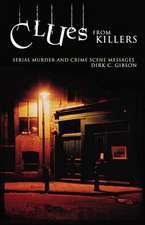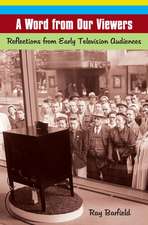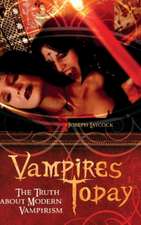Serial Murder and Media Circuses
Autor Dirk C. Gibsonen Limba Engleză Hardback – 29 iul 2006 – vârsta până la 17 ani
Preț: 309.07 lei
Preț vechi: 375.65 lei
-18% Nou
Puncte Express: 464
Preț estimativ în valută:
59.14€ • 63.24$ • 49.31£
59.14€ • 63.24$ • 49.31£
Carte tipărită la comandă
Livrare economică 18 aprilie-02 mai
Preluare comenzi: 021 569.72.76
Specificații
ISBN-13: 9780275990640
ISBN-10: 0275990648
Pagini: 256
Dimensiuni: 156 x 235 x 26 mm
Greutate: 0.55 kg
Editura: Bloomsbury Publishing
Colecția Praeger
Locul publicării:New York, United States
ISBN-10: 0275990648
Pagini: 256
Dimensiuni: 156 x 235 x 26 mm
Greutate: 0.55 kg
Editura: Bloomsbury Publishing
Colecția Praeger
Locul publicării:New York, United States
Notă biografică
Dirk C. Gibson is Associate Professor of Communication and Journalism at the University of New Mexico. He has published numerous articles on a variety of topics in such journals as Public Relations Quarterly, Public Relations Review, and Southern Communication Journal. He has also published several book chapters and two books, The Role of Communication in the Practice of Law (1991) and Clues from Killers (Praeger, 2004).
Cuprins
PrefaceIntroductionHenri Desire LandruThe Axeman of New OrleansEarle NelsonThe Manson 'Family'Ian Brady & Myra HindleyAngelo Buono Jr, & Kenneth BianchiJeffrey DahmerDorothea PuenteGary RidgwayAndrew CunananPaul Bernardo & Karla HomolkaWestley DoddConclusionsBibliographyIndex
Recenzii
Gibson examines 12 cases of serial murder between the 1890s and 1990s that were heavily covered by the mass media. He argues that there is a complex and deep-seated inter-relationship between the two in contemporary American life, and that the American media plays a multi-dimensional and integral role in serial killings and the investigation into them.
Gibson organizes his book one case at a time, describing the criminals, crimes, victims, investigations, community reactions, and the role of communication, including rhetoric, journalism, and public relations, in all aspects of these events. The book is clearly written and efficiently organized so that anyone interested just in public relations techniques, for example, can find that information quickly. Taken together, his case studies point to the troubling downside of mass press coverage of these horrific crimes, Media circuses, he argues, have hindered investigations, harmed victims families, and created panic..[G]ibson's case studies and in particular, his conclusions and recommendations could inspire a lively debate among both journalism and public relations students about the role of media in these high-profile crimes and investigations.
Gibson organizes his book one case at a time, describing the criminals, crimes, victims, investigations, community reactions, and the role of communication, including rhetoric, journalism, and public relations, in all aspects of these events. The book is clearly written and efficiently organized so that anyone interested just in public relations techniques, for example, can find that information quickly. Taken together, his case studies point to the troubling downside of mass press coverage of these horrific crimes, Media circuses, he argues, have hindered investigations, harmed victims families, and created panic..[G]ibson's case studies and in particular, his conclusions and recommendations could inspire a lively debate among both journalism and public relations students about the role of media in these high-profile crimes and investigations.















